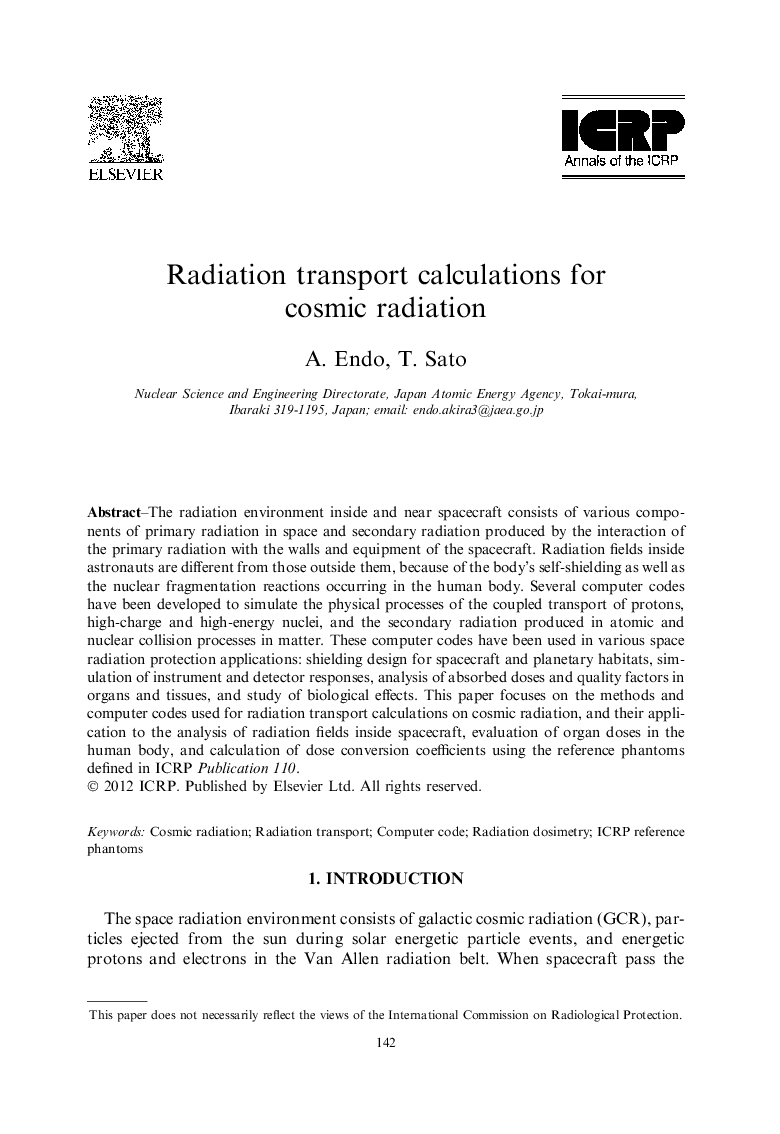| Article ID | Journal | Published Year | Pages | File Type |
|---|---|---|---|---|
| 1878533 | Annals of the ICRP | 2012 | 12 Pages |
Abstract
The radiation environment inside and near spacecraft consists of various components of primary radiation in space and secondary radiation produced by the interaction of the primary radiation with the walls and equipment of the spacecraft. Radiation fields inside astronauts are different from those outside them, because of the body's self-shielding as well as the nuclear fragmentation reactions occurring in the human body. Several computer codes have been developed to simulate the physical processes of the coupled transport of protons, high-charge and high-energy nuclei, and the secondary radiation produced in atomic and nuclear collision processes in matter. These computer codes have been used in various space radiation protection applications: shielding design for spacecraft and planetary habitats, simulation of instrument and detector responses, analysis of absorbed doses and quality factors in organs and tissues, and study of biological effects. This paper focuses on the methods and computer codes used for radiation transport calculations on cosmic radiation, and their application to the analysis of radiation fields inside spacecraft, evaluation of organ doses in the human body, and calculation of dose conversion coefficients using the reference phantoms defined in ICRP Publication 110.
Related Topics
Physical Sciences and Engineering
Physics and Astronomy
Radiation
Authors
A. Endo, T. Sato,
